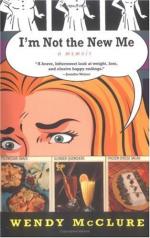it, to have arrayed himself in violent opposition:
a situation which rendered him in work and in life
contradictory to his natural instinct. It is
the old story of the defect of system. Even the
most cunningly devised cannot make a place for all
the many manifestations of temperamental activity.
Like Gericault, a pupil of Guerin, Delacroix found
in his master and in the general spirit of the school
an insistence on the letter of the classic law to which
his richly endowed nature could not bend, and was
thus forced to rebel; whereas a more elastic application
of received principles would have found him an enthusiastic
adherent. In this way he missed acquiring the
technical mastery over form, which proved a stumbling
block to him through life. At times his drawing
is possessed of a vigor and life which even Ingres
never had; at others his work is almost lamentable
in its lack of constructive form. In respect to
color in its finest, most harmonic qualities, he is
the greatest of French painters; and at all times
he is master of an intense dramatic force. It
was with a masterpiece—“Dante and
Virgil”—that he made his first appearance
at the Salon in 1822. At a bound he found himself
famous. Guerin, who had counselled him against
sending his picture to the Salon, grudgingly acknowledged
that he was wrong. Gros told him that it was like
Rubens, with more correctness of form—Rubens
“chastened” was the word. The government
bought the picture, paying the artist two hundred and
forty dollars—twelve hundred francs—for
it.
The same year Delacroix submissively made his final
attempt for the Prix de Rome, but came out sixtieth
in the competition. Thenceforward he was to be
constantly before the public, constantly opposed,
misunderstood, criticised; but nevertheless, with all
the energy which shows in his portrait, constantly
in the front. When his defenders had sufficient
influence to force the hand of the ministry of fine
arts, he was commissioned to paint for the state;
and to this we owe the decorations in the gallery
of Apollon in the Louvre, the decorations in the church
of St. Sulpice, and others. When he received the
order for the entrance of the Crusaders to Constantinople
for the Gallery of Battles at Versailles, the good
King Louis Philippe sent him word to make it as little
like his usual style as possible!
Among Delacroix’s critics Ingres, with all the
force of his convictions, was the foremost. He
to whom a sky had always served as a simple background
was not created to understand the almost purple canopy
of azure stretching far above the heads of the Crusaders;
nor to find barbaric delight in the rich trappings
of horses and men, since to him a drapery was simply
a textureless covering adjusted to accentuate the
form beneath. Delacroix, whose intelligence was
of a higher order and who said of himself that he
was “more rebellious than revolutionary,”
treated Ingres when they met on official occasions,




